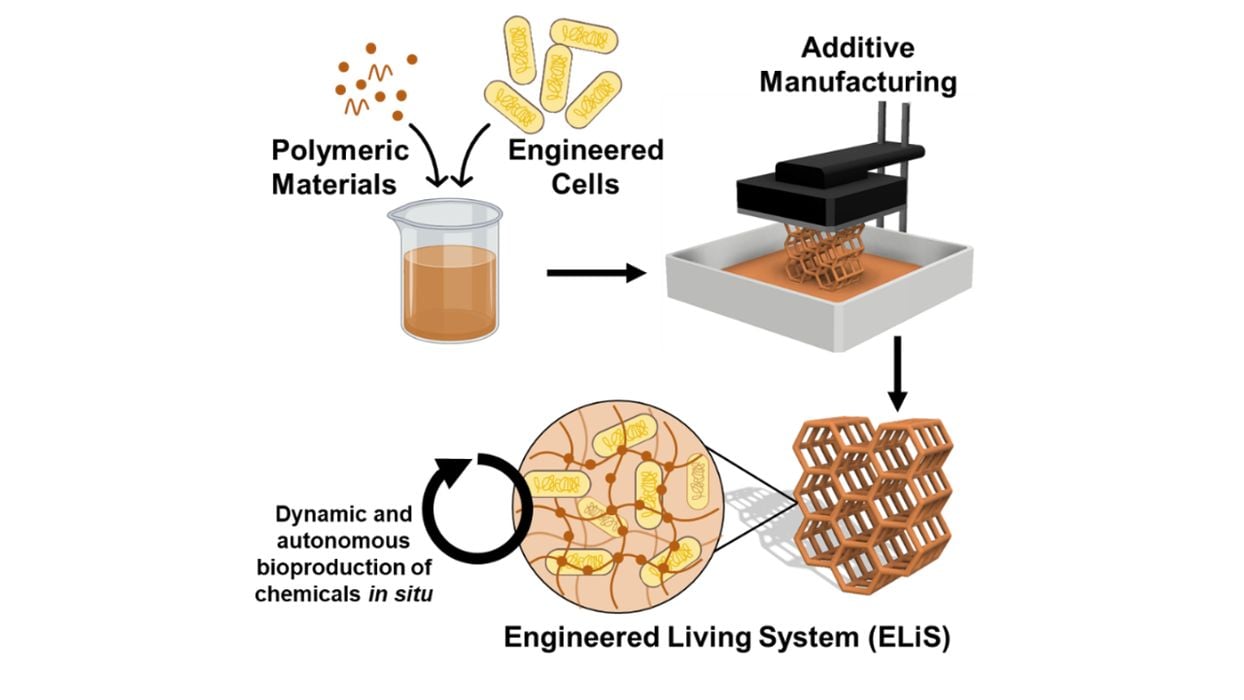
I’m reading about a new material category called “engineered living systems”, (ELiS), which involve integrating polymers with living cells.
To date there have been primarily two types of 3D print materials: non-living polymers, metals and ceramics, and living cells for bioprinting. The proposed approach is to integrate the two to enable entirely new types of 3D printable materials.
Researchers at the University of Washington, University of Texas Austin and UC Davis have been developing this concept. They explain:
“With advances in material science, we have for the first time the capacity to specify the functions and traits of materials and even endow them with living traits. This convergence of synthetic biology with polymer science has led to the rapid emergence of engineered living systems (ELiS), which we define in this project as composite materials of engineered cells encapsulated within a polymeric matrix. The living cells can serve as autonomous factories that dynamically control the production of proteins, carbohydrates, metabolites, and small molecules in response to pH changes, oxygen and light levels, and other cues.”
This is quite an incredible concept. One can imagine designing materials that can perform seemingly magical feats by leveraging the embedded living cells. What might those functions be? I could see things like automated repair of flaws, sensors of many types, color changes, odor emissions, and countless other ideas.
However, this requires that the cells be provided with the resources required to live and execute their assigned functions. A key resource is obviously water, which normally does not flow within materials.
The current research step is to develop methods of hydration for the cells. The project is taking two approaches:
“Hydration plays a critical, distinctive role in deploying ELiS outside of the lab and into the built environment. Moreover, hydration is essential to all life; therefore we will investigate two primary specific conditions in this project to evaluate: (1) low and oscillating hydration ELiS that self-strengthen/repair by taking advantage of native fungal soil microbes that can be sustained with minimal water and (2) fully saturated hydroponic ELiS hydrogels that use capillary networks for transport and hydration to enable bio-sustained function and biocontainment of cyanobacteria and microbial co-cultures.”
This is about as far as one can get from commercialization, and we are unlikely to see any material products appear on product shelves anytime soon. However, the concept is so intriguing that it deserves attention. Should the approach succeed we could suddenly find ourselves in a new world of man-made living-non-living materials performing duties we could not have imagined.
